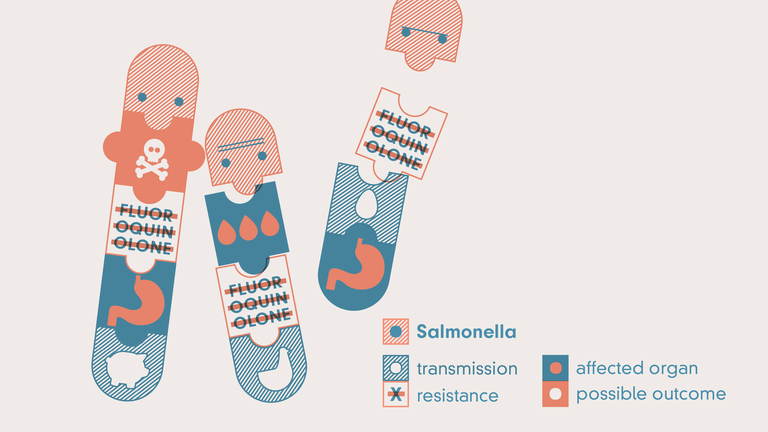Salmonella – Fluoroquinolones
The WHO warns of Salmonella bacteria resistant to fluoroquinolone-antibiotics. Here you can see their prevalence in Europe’s hospitals. The percentage indicates the ratio of Salmonella found to be resistant to this particular antibiotic.
The bug
Salmonella are one of the most common causes of food infections. The bacteria live in the gut and feces of animals, for example, chicken and pigs. The bacteria can be ingested through improperly cooked meat, through eggs or milk. They most commonly cause stomach and intestinal infections. For unknown reasons, these infections have heavily increased in many countries over the last few years. It is estimated that there are 100 million salmonella infections each year, causing around 150,000 deaths. The most affected regions are South-East-Asia and the Western Pacific.
Fluoroquinolones work against a broad range of bacteria. The precursors of the substances used today were discovered in 1962. These antibiotics disturb the repair of bacterial DNA and kill the microbe. The substance can be applied orally.
The resistance
Fluoroquinolones work against a broad range of bacteria. The precursors of the substances used today were discovered in 1962. These antibiotics disturb the repair of bacterial DNA and kill the microbe. The substance can be applied orally.

Salmonella are a group of related bacteria. They are transmitted through contaminated food and infect primarily the gut, but sometimes also the blood.
Text: Hristio Boytchev
Illustration: Nick Böse
Graphics: Simon Wörpel
Copy Editing: Christine Coester
